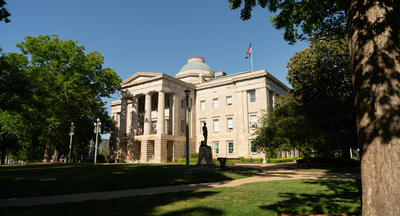
State Government Affairs, Elections & Campaigns
How Lieutenant Governors Are Selected (And Why It Matters)
December 10, 2025 | Bill Kramer
February 22, 2019 | Liz Malm, Lauren Doroghazi

Morgan Scarboro, Max Rieper, Ryan Maness, Sarah Doyle, Mike Greene, Amber Thyson, and John Lunde completed the data collection for this report.
Each year, governors deliver their State of the State addresses, laying out the priorities for their administrations in the coming year. These priorities often drive what ultimately becomes law and also shape the debate as legislatures set their own agendas.
What issues are important to state executives this year?
To find out, we scoured the text of each governor’s State of the State address and noted the priority issues cited by each governor. Priorities are diverse — some are broad (tax reform and education reform, for example), and some are narrow or particular to a state (like the Permanent Fund in Alaska).
We categorized gubernatorial priority issues into eight broad policy categories: Budget & Taxes, Business, Education, Employment & Labor, Energy & Environment, Health & Wellness, Law & Legal, and Social Policy.
The chart below shows the issues mentioned in each of these policy categories, and each bar in the chart indicates the number of governors that mentioned that issue as a priority in their State of the State address. For example, paid leave was cited as a priority by four governors, and this is one of the issues in the “Employment & Labor” category.
Note that a few governors have not yet delivered a State of the State address, so they are not included here (we included speeches that were completed as of February 21, 2019, and excluded the following states where addresses have not yet been made: Alabama, Florida, Louisiana, Minnesota, North Carolina, Ohio, and Tennessee).
Education was the most prevalent category of issues cited by governors this year. Thirty-six governors said education funding and/or reform would be a priority for their administration. School safety was another frequently addressed education issue, with 12 governors mentioning it. Some governors discussed school safety in the context of gun policy, while others focused on mental health policies and security measures.
Budget & Taxes are always prevalent in State of the State addresses, and this year was no different. Tax reform was mentioned by 21 governors — sometimes broadly with few details, and other times with specific tax policies governors seek to change (for example, several cited property and income tax reform). Transportation funding and reform was also a popular topic, and was mentioned by 20 governors.
Other oft-cited issues were health care (20 governors), criminal justice (19 governors), workforce development (16 governors), economic development (15 governors), opioids and drug policy (14 governors), and general budget issues (14 governors).
Our chart shows the full range of issues discussed by governors this year. It's important to note that gubernatorial interests don't guarantee action, especially in states where the legislature is controlled by a different party than that of the executive. They can, however, provide insight on trends — for example, marijuana legalization and reform did not appear in our analysis from 2016, but featured in seven speeches this year — and, where the interests of the governor and legislative leaders align, action is likely.
If you’re curious about the specifics of any of these priorities, you can reach out to Liz Malm or access the full text of the State of the State Addresses here.

Note: image has been updated to update the number of governors citing marijuana legalization and reform as a priority.

December 10, 2025 | Bill Kramer
-d868d2-400px.jpeg)
July 1, 2025 | Maggie Mick

June 23, 2025 | David Shonerd